Inside the scandal-hit world of Japan's sumo wrestlers
- Published
Sumo wrestler Harumafuji sorry for "causing trouble"
Standing resolute amid a frenzy of flashbulbs, the damp-eyed warrior announced his immediate retirement.
"I apologise from my heart," he declared, bowing deeply for almost 30 seconds.
Harumafuji - his fighting name - was a sumo grand champion, known in Japanese as "yokozuna", until last Wednesday. On 25 October, he allegedly attacked a younger wrestler in a bar and fractured the man's skull, provoking weeks of headlines and a police investigation.
The case has cast a cloud over Japan's ancient national sport, and it's far from the first time. A decade ago, its reputation plunged when a 17-year-old trainee died after his elders beat him with a beer bottle and a baseball bat.
In 2010, an illegal betting ring with alleged links to Japan's yakuza gangsters struck another blow. Harumafuji's mentor, the great Mongolian champion Asashoryu, resigned the same year after a drunken brawl outside a Tokyo nightclub.
Then evidence of match-fixing emerged in sumo's second division.
Are these signs that sumo is dying in its homeland, the discipline that once defined it in tatters? Or is it just that after 15 centuries, the dark side finally makes the papers?
'The Mongolians are coming!'
To answer those questions, it helps to look at where sumos come from - and the savage training regime that shapes them.
Though sumo originated in Japanese temple rites performed some 1,500 to 2,000 years ago, the nation no longer dominates in the ring. Until this week's departure, there were four sumo grand champions. Three of them, Harumafuji included, are Mongolian.
Eastern Europe, Russia, Hawaii and Samoa all send promising wrestlers to the Japanese sumo "stables" - effectively a men's boarding house where "stable masters" drill surly teenagers in the arts that once thrilled the imperial courts.
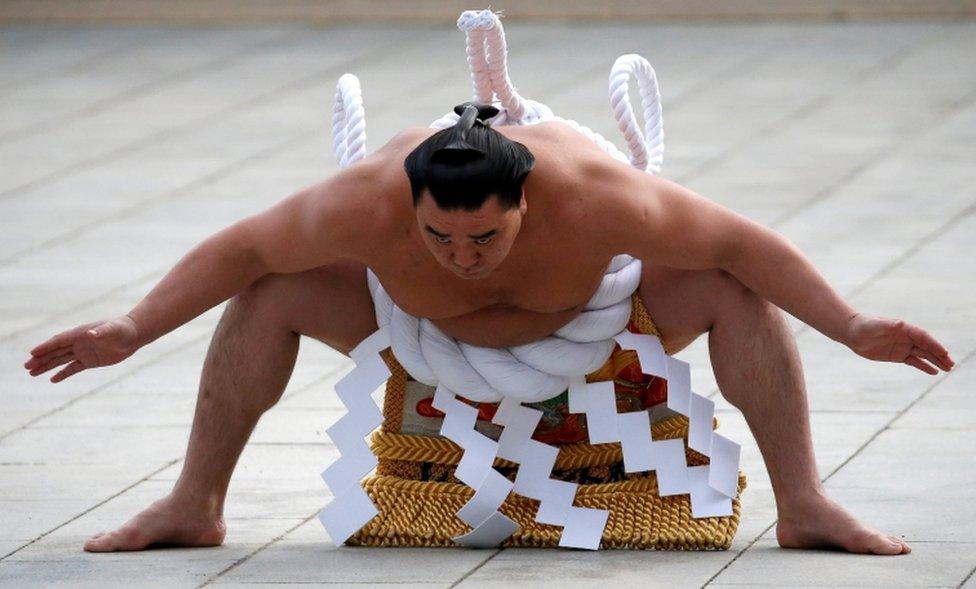
Harumafuji performs the ring-entering rite during New Year celebrations in Tokyo
In the land of the rising sun, sumo isn't just a sport - it's a ceremonial window on the past, steeped in tradition and what it means to be Japanese. Strict rituals set out the code of behaviour, and being born overseas is no excuse for slacking.
All sumos must wear traditional dress in public, including a Samurai-inspired topknot. At tournaments, triumph and disaster should be greeted with equal impassivity. In conversation, the wrestler must be a model of softly-spoken humility and behave with "hinkaku" - dignity. Their status is such that strangers will bow when they walk down the street.
Each of the 45 stables can accept just one foreigner (or "gaikokujin") at a time, by order of the highly conservative Japan Sumo Association.
And when they get there, often just 15 and no older than 23 - it's time to eat, speak, fight, dress and breathe Japanese.
Cooking, cleaning - and nothing for breakfast
"They're like a very junior soldier in basic training," explains sumo expert Mark Buckton, a former commentator and columnist with the Japan Times.
"So they're doing the cooking, the cleaning, peeling the potatoes… And everyone learns Japanese, everyone does."
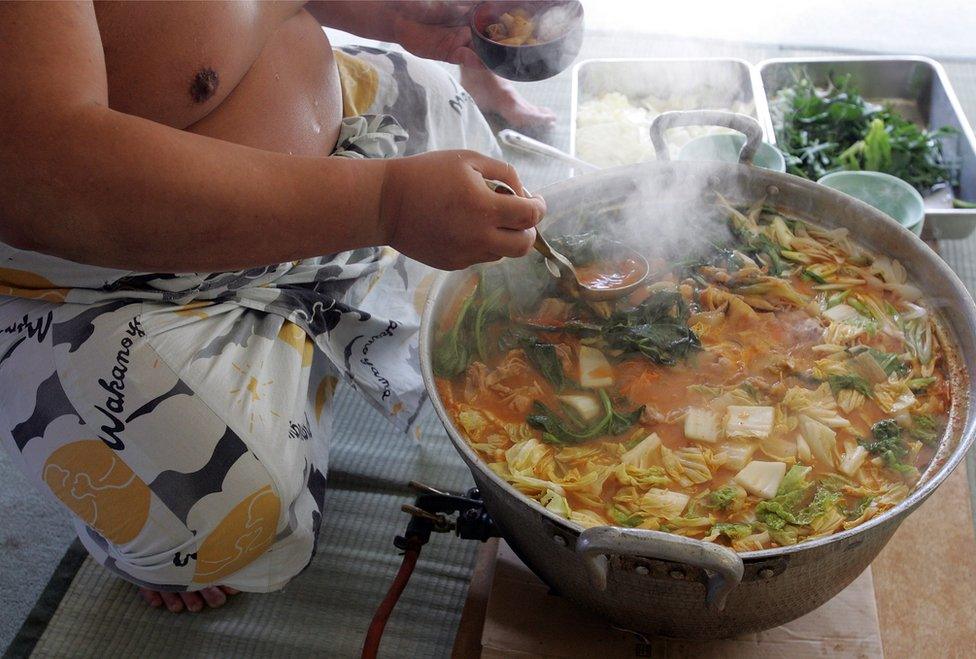
A sumo wrestler dishes up chanko-nabe, a protein-rich stew
The stable is run under a strict hierarchy, with the stable master - a former wrestler - at the top.
"It's not like football where you can transfer from Manchester United to another team," Mr Buckton told the BBC. "You are in that stable for life. The only way to leave is to leave sumo."
Every wrestler grows his hair long, often to the mid back, so the stable's resident hairdresser can arrange it into the historic styles. It's washed only every week or two, and slicked with bintsuke oil - whose sweet smell accompanies the wrestler everywhere.
Meals, often a meaty hotpot with veg, are as strictly controlled as the training - where youngsters spend hours trying to push huge men across a sand-covered ring.
"They do eat a lot," says Mr Buckton. "But what they do which is crucial to them is, as soon as they've eaten they go to sleep. They don't eat anything for breakfast - they do all the training in the morning. They eat their lunch - they would have what you would have, maybe a bit more. But they would just eat it with large volumes of rice. Crucially they will then go to bed. They won't wake up till mid-afternoon.
"Then they'll eat again in the evening - they'll eat a lot. And then they'll go to bed quite early, because they'll be up at 5, 6 o'clock in the morning training."
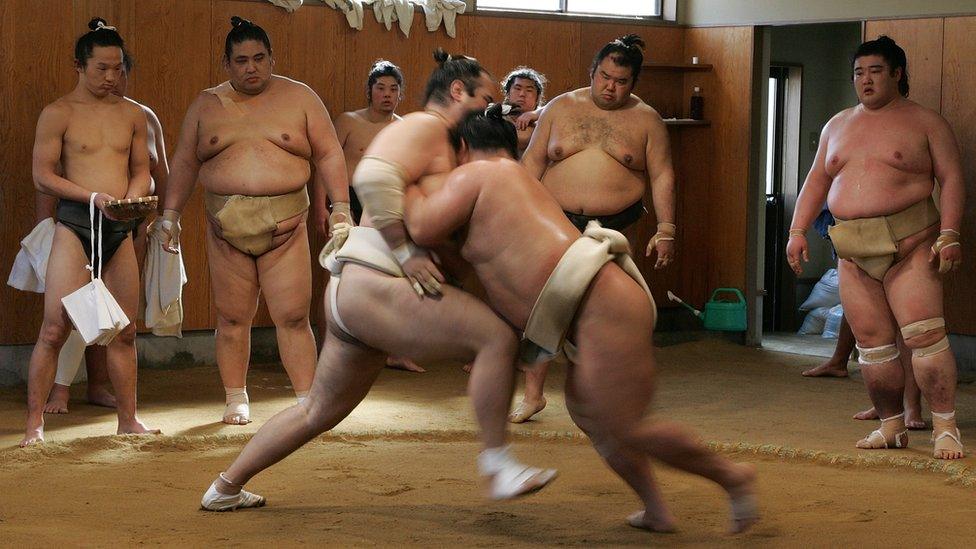
Sumo wrestlers take part in a training session
Do stricter stables tend to produce better fighters?
"Definitely. Definitely."
No to salaries, girlfriends and phones
There are six professional sumo tournaments a year, all held in Japan. Promotion through the ranks comes from winning more than you lose, and a wrestler wins by forcing his opponent out of the ring, or making him touch the ground with anything except his feet.
Some 650 fighters make up the six divisions, but only about 60 are in the top tier. The bottom four divisions are all unpaid. A very gifted fighter might take two or three years to reach the dizzying goal of a salary.
When it comes, it's pretty good. Around $12,000 (£8,900) a month in division two, and perhaps $60,000 a month at the top, including sponsorship deals.
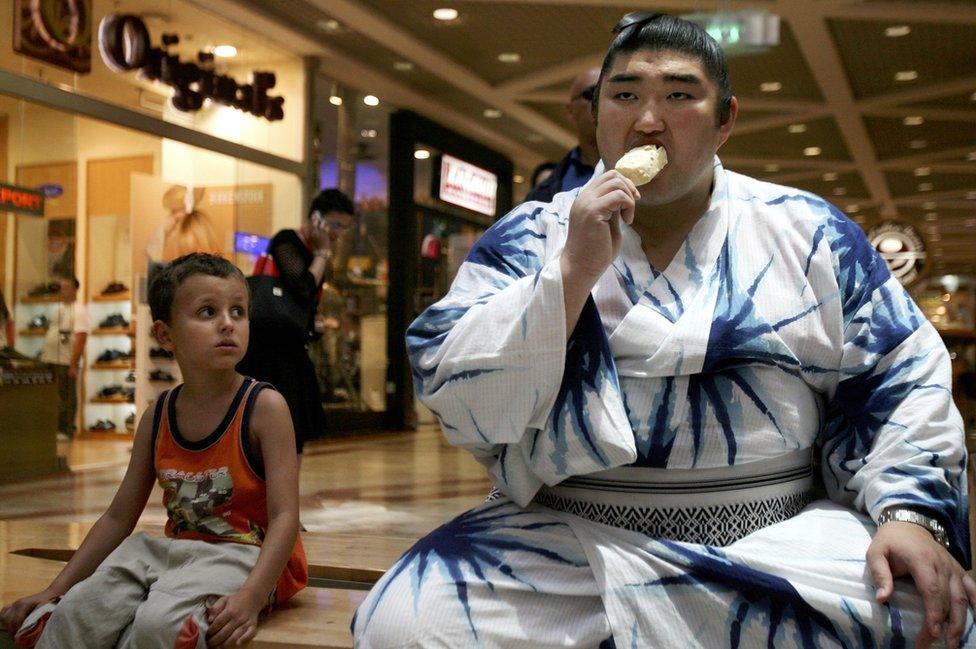
Sumo dress can prove eye-catching when the fighters travel overseas
There are plenty of starker incentives, however.
Junior wrestlers are meant to wear a thin cotton yukata [robe] and geta [wooden sandals] even in the depths of winter.
Driving is not allowed, but the best fighters have drivers. A status symbol and a necessity, because their stomachs make it hard to reach the steering wheel.
Mobile phones and girlfriends are technically banned below divisions 1 and 2, the sekitori ranks, though some leniency is creeping in. Women cannot live at the stables, and a fighter can't marry and live outside with his wife unless he reaches at least the second division.
Worse still, if he is injured and drops into the third division, he must leave his wife and children behind and move back into the stable.
Young sumo Musashikuni and stable master Musashimaru explain what the life of a sumo involves
What happens if the young men don't meet their masters' standards, or rail against the relentless, almost monastic regime?
"Oh, they are horrible," confirms Mr Buckton. "Before the boy was killed in 2007 there were regular beatings. You'd see guys with welts on their backs and on the backs of their legs, for not trying hard enough."
Last year, reports claim, a wrestler was awarded nearly 32.4 million yen (£214,000; $288,000) after daily mistreatment left him blind in one eye.
The grand champion Hakuho, a Mongolian from the capital, Ulan Bator, gave a shocking account of this "kawaigari" or "doting" - a euphemism for violent beatings lasting up to 45 minutes.
He spoke out after 17-year-old Takashi Saito was beaten to death following threats to run away from his stable, external.

Hakuho, a much-loved champion, has spoken frankly about the beatings he endured
"You may look at me now and see that I have a happy face, but at that time I was crying every day," Hakuho said. "The first 20 minutes are just so painful. But after that it becomes easier, because even as you're being beaten up you start to feel less pain.
"Of course I cried, and when my elder told me that 'it's for your own good,' I cried again."
Breaking the code of secrecy
Why would a sport that subjects its greatest talents to a rigorous, years-long course of corporal punishment force Harumafuji into retirement for hitting a junior wrestler?
"Well, he beat him in a bar..." Mark Buckton observes. And therein lies the problem.
Sumo writer Chris Gould, who has followed the sport for three decades, says its code of silence is strong.
"There is remarkable consistency in how the training, and the punishments, have been applied across the different stables and over the decades. This also means that when Harumafuji-style incidents happen, you don't talk about them for the sake of preserving the group.
"It's interesting to see the injured wrestler's coach, Takanohana, being criticised by some for speaking out of turn and breaking the secrecy rule. In most other sports he'd be lauded as a whistleblowing hero."
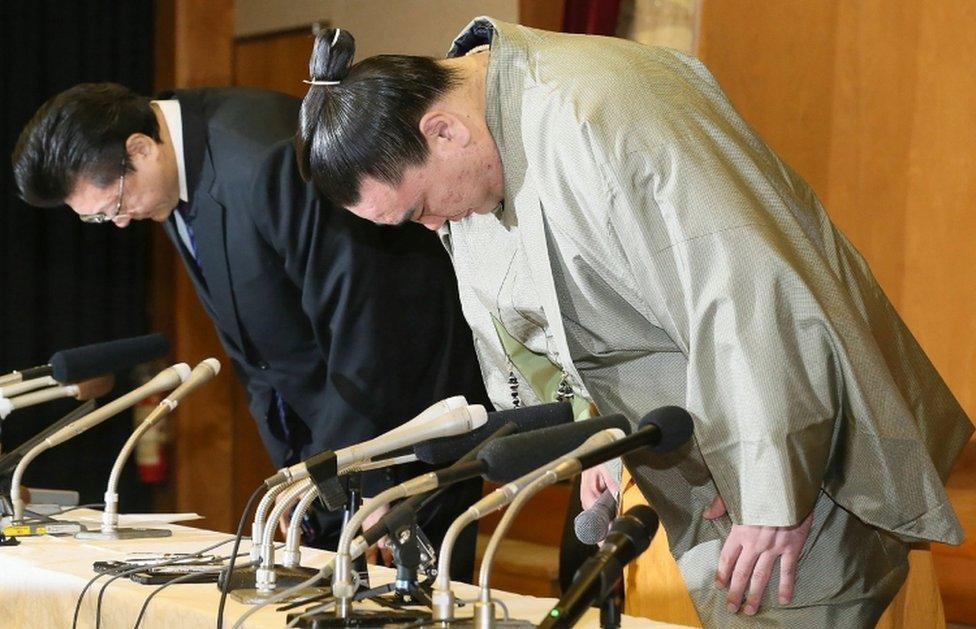
Harumafuji (R) and his stable master Isegahama bow in apology during a press conference
With this sort of attitude, can sumo really expect young sportsmen to keep filling its ranks?
The days when the promise of two square meals a day would draw in broke, hungry recruits from big rural families are mercifully past in modern Japan, and other sports like football and baseball offer better salaries without the risk of violence.
But despite all this, sumo is enjoying a popularity boost. Back in January, Japan got its first home-grown grand champion in almost two decades, to the absolute joy of fans.
The Japan Sumo Association is also playing its part with a smart publicity drive.
In Mr Gould's view, doom-mongering about sumo's decline is premature.
"It's not time to panic about the future yet. But the sumo association needs to spell out what sumo is for, what it is against, and the core values that bind it together. Unless that happens, the numbers of great wrestlers who never applied will continue to increase."
- Published29 November 2017
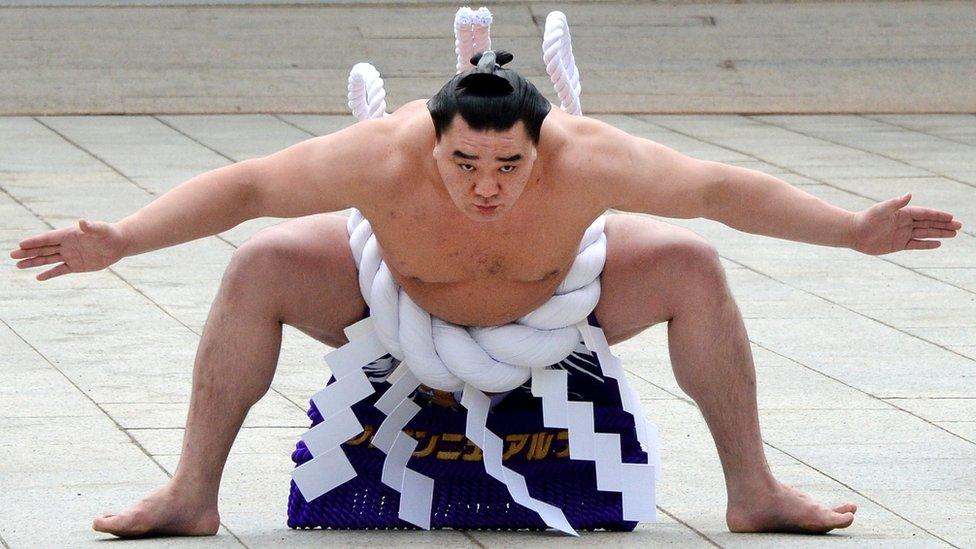
- Published14 November 2017
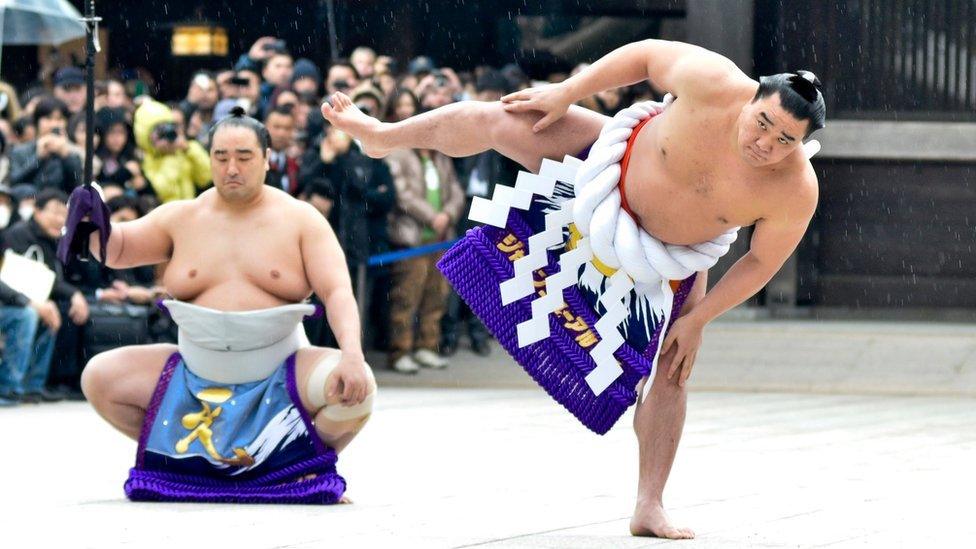
- Published31 July 2017
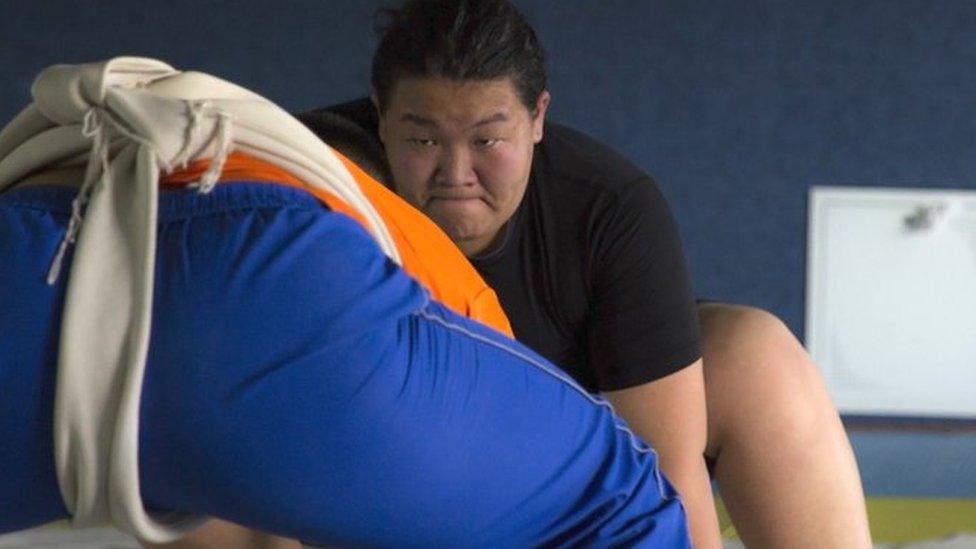
- Published25 January 2017
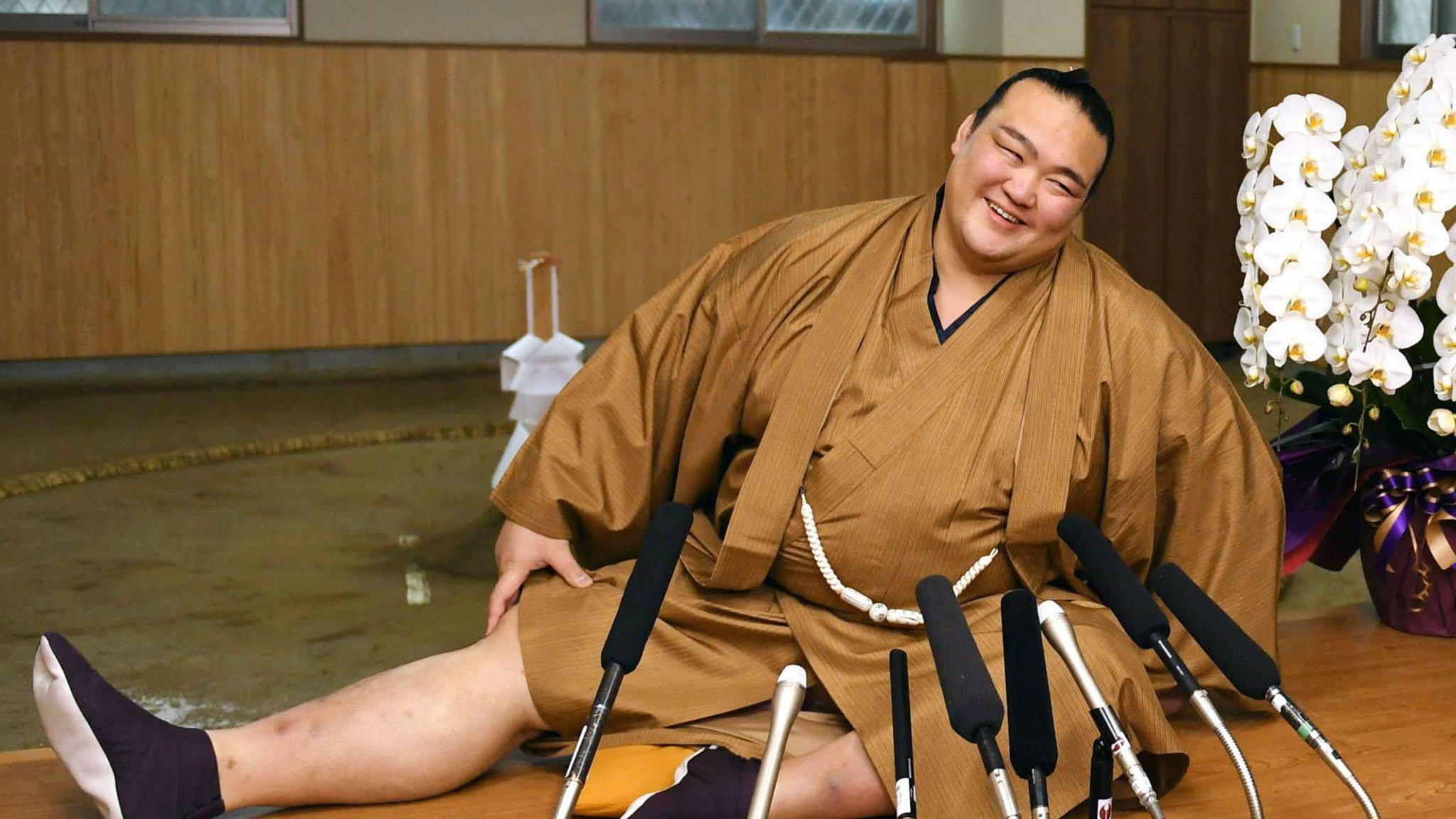
- Published25 January 2017
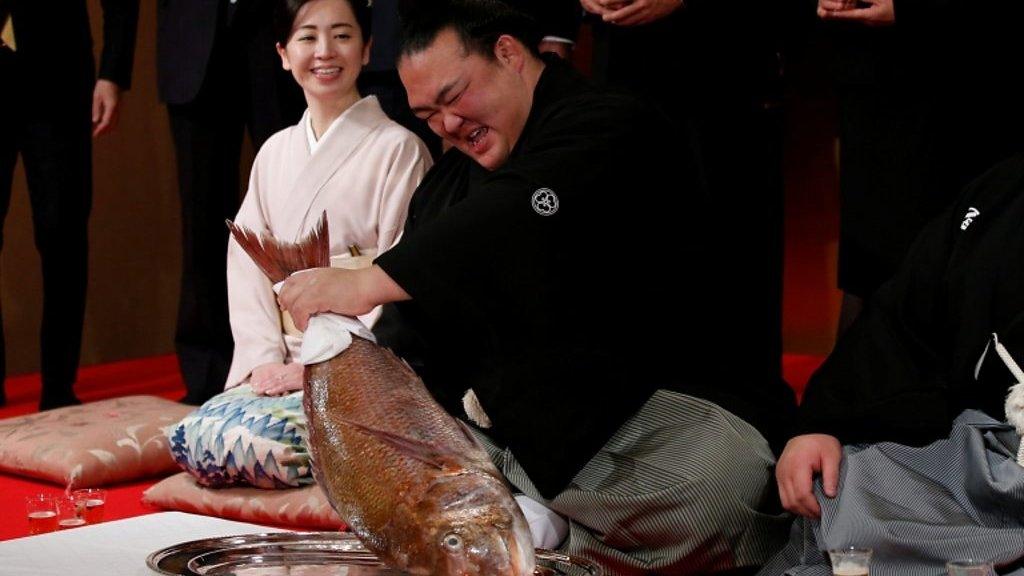
- Published4 July 2010
- Published4 April 2015
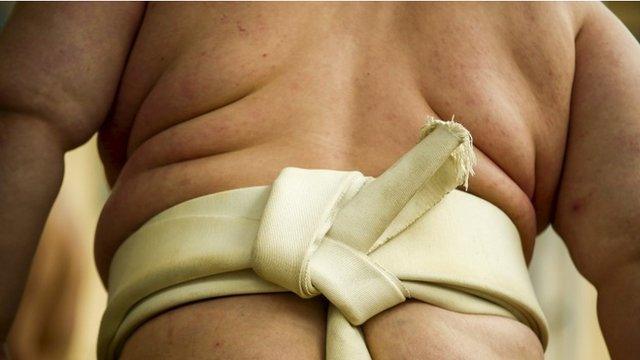
- Published23 September 2010